I'm going to switch on/off 64 LEDs with a frequency of 100Hz to give the impression that they are all on at the same time. In order to optimize power consumption I want to make sure only one LED is on at any point in time. To achieve this I would need a duty cyle of $$Duty = \frac{1}{64} = 1.5625\%$$
This is obviously on the lower level of the LED brightness, so to combat the brightness I would have to increase the instantanious current, which I have decided would fit well in the range of 100mA to 300mA after testing, research and consulting the datasheet. This will give me an average current of 1.56mA to 4.69mA and the maximum I can get out of the LEDs without possibly harming them. The brightness at ~4.5mA is a good brightness.
The problem I have, is that when I apply 5V and set the duty cycle of a square wave to 1.5%, I can never achieve more than ~0.5 to 1mA. So I tried lowering the resistance until the point where I have just shorted out the resistor, and I never get more current than this. Would increasing the supply voltage work? Because I tried this (with a mosfet + resistor) and it did not work. Is there something I'm missing here? How can I get more current out of this LED?
My circuit is in the schematic below. I'm using a 2N7000 NMOS but I have also tried the circuit without the NMOS and the square wave directly to the LED-resistor circuit, and the result is about the same. The LEDs are blue ones (3.2-3.4V).

simulate this circuit – Schematic created using CircuitLab
My calculations was 5ohm resistor, and as the LED and NMOS both have internal resistance (rds = 6ohm), a short isn't much of a difference anwyay was my thoughts. $$R_{LED} = \frac{5V - 3.4V} {300mA} = 5\Omega$$
